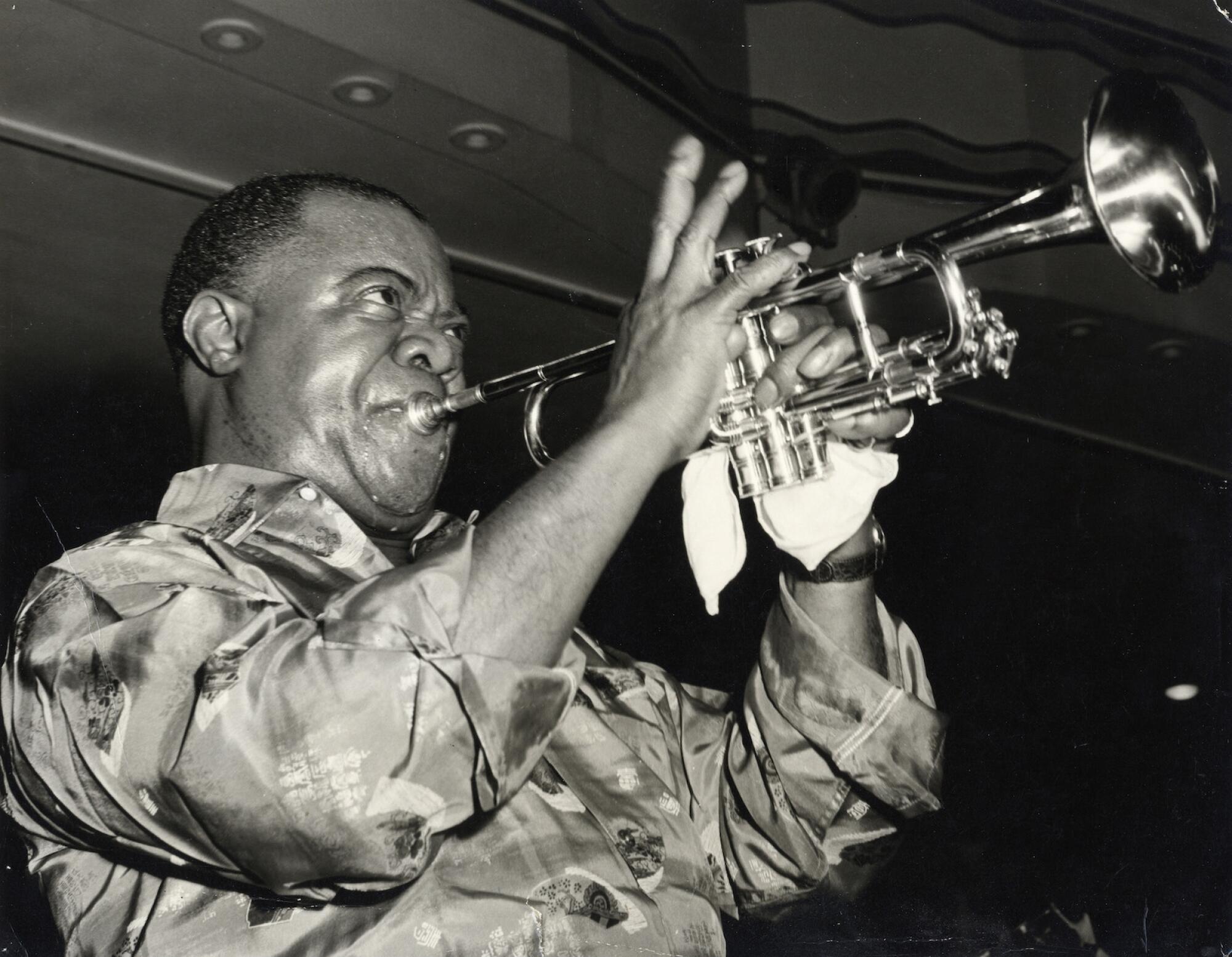Over the last decade, the streaming revolution has triggered a documentary gold rush. Whatever your nonfiction area of interest happens to be — serial killers, cult leaders, athletes, con men or exotic animal enthusiasts — there’s probably several dozen documentaries available for viewing a few button-clicks away.
Thankfully, this is also true for those of us who enjoy a well-told saga about a more universal human interest: music. There’s been a renaissance recently in pop music documentaries on subjects ranging from Wham! to Jennifer Lopez. In the last few months alone, revealing feature-length films about Celine Dion and Elton John have landed on streaming, casting iconic figures in a vulnerable new light. Apple TV+ also announced plans for a film about Fleetwood Mac. The platforms have also made it easier for viewers to access great documentaries dating back to the early days of pop music.
For those who can’t get enough about music and musicians — whether tragically exploited, woefully misunderstood or just prodigiously talented — we’ve compiled a list of great documentaries currently available to stream, divided chronologically by subject between TV critic Robert Lloyd and reporter Meredith Blake . It is by no means comprehensive, but if you’re hankering for one great music doc or 10, it’s a place to start. Please note: some great titles, like “Truth or Dare,” “Amy” and “Some Kind of Monster,” were not included because they are currently available only for rental.
‘Jazz on a Summer’s Day’ (1959)
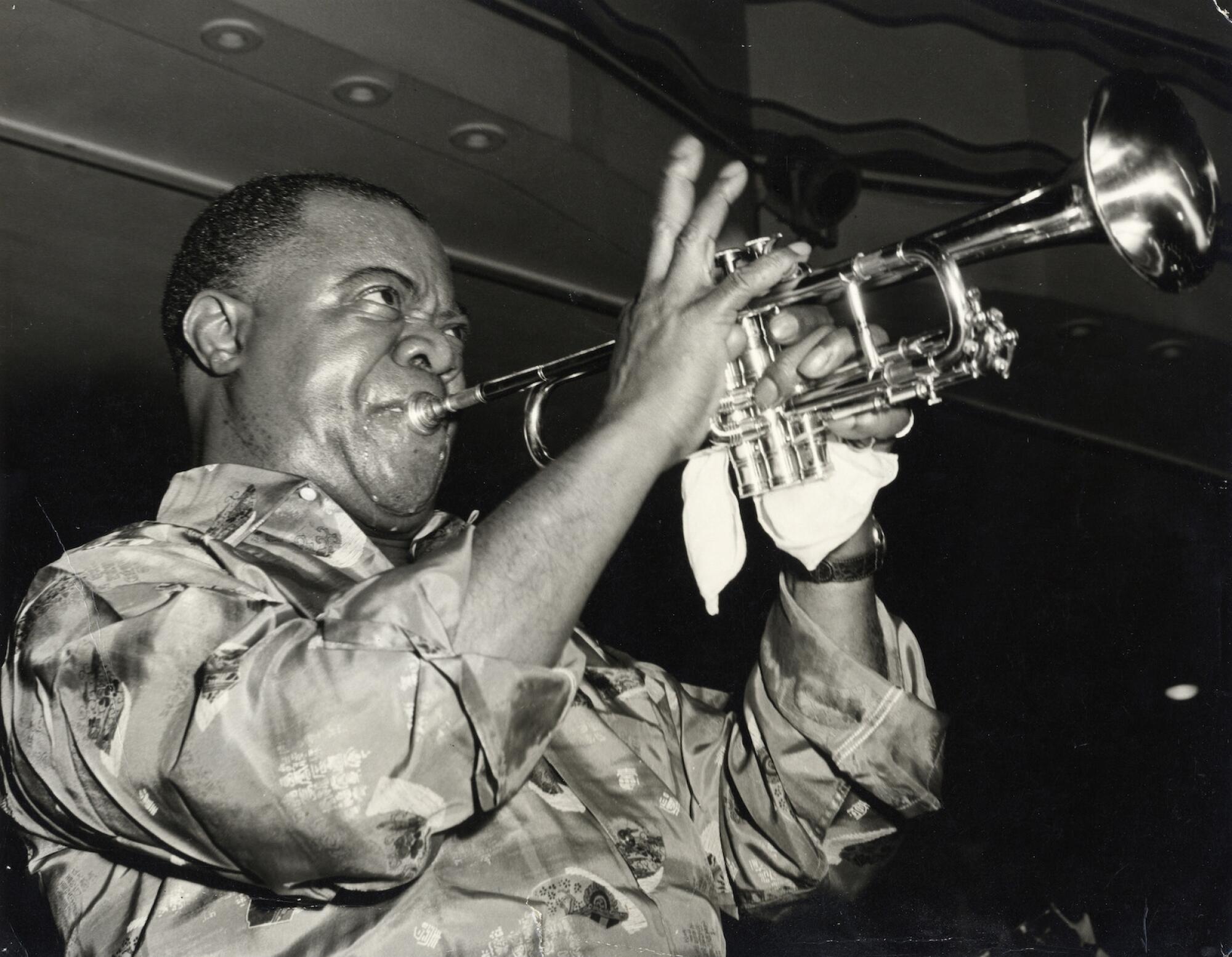
Louis Armstrong is among the performers featured in “Jazz on a Summer’s Day.”
(Louis Armstrong House Museum)
Would I call this memento of the 1958 Newport Jazz Festival the best of all concert films? I would. Certainly it’s the most visually beautiful, co-directed by the American fashion photographer Bert Stern (best known for Marilyn Monroe’s last photo session) with editor Aram Avakian. Creamy and atmospheric, with a keen sense of color and light, it arranges performances from four days into a single, morning-to-night concert, beginning with Thelonious Monk and ending with Mahalia Jackson. Along the way are the likes of Sonny Stitt, Gerry Mulligan, Anita O’Day in her big feathered hat, Chuck Berry backed by jazz musicians (this must be the only version of “Sweet Little Sixteen” to include a clarinet solo), Louis Armstrong and Jack Teagarden doing their “Rocking Chair” double act, and much more. (Stream on Plex and Kanopy.) — Robert Lloyd
‘What Happened, Miss Simone?’ (2015)
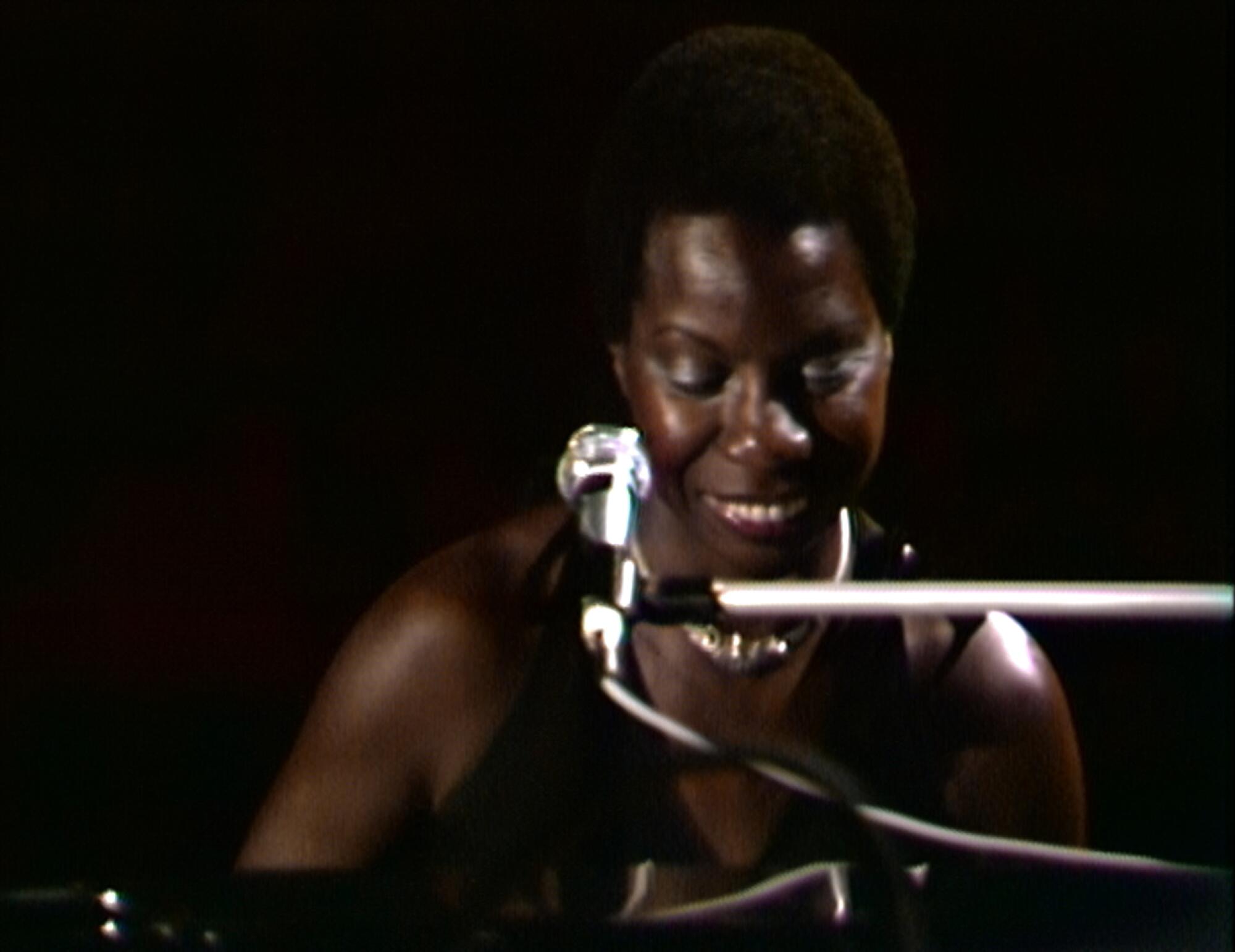
Nina Simone in “What Happened, Miss Simone?”
(Netflix)
Liz Garbus’ journey through the life and career of singer-pianist Nina Simone has an edge-of-your-seat, can’t-look-away power. Simone set out to be a classical pianist, but fate opened a different door, and she applied her training to a powerful blend of jazz, blues, Bach, soul and pop that made her a star from the late 1950s. Though there are many themes here — race, self-determination, mental illness, the domestic strife that enters into many such show business stories when a person is also a commodity. But what shines through, from an illustrious beginning to what, after some hard years, feels like a happy end, is her ferocious talent; every performance, and we see many, is spine-tingling good. (Stream on Netflix.) — R.L.
‘Dont Look Back’ (1967)
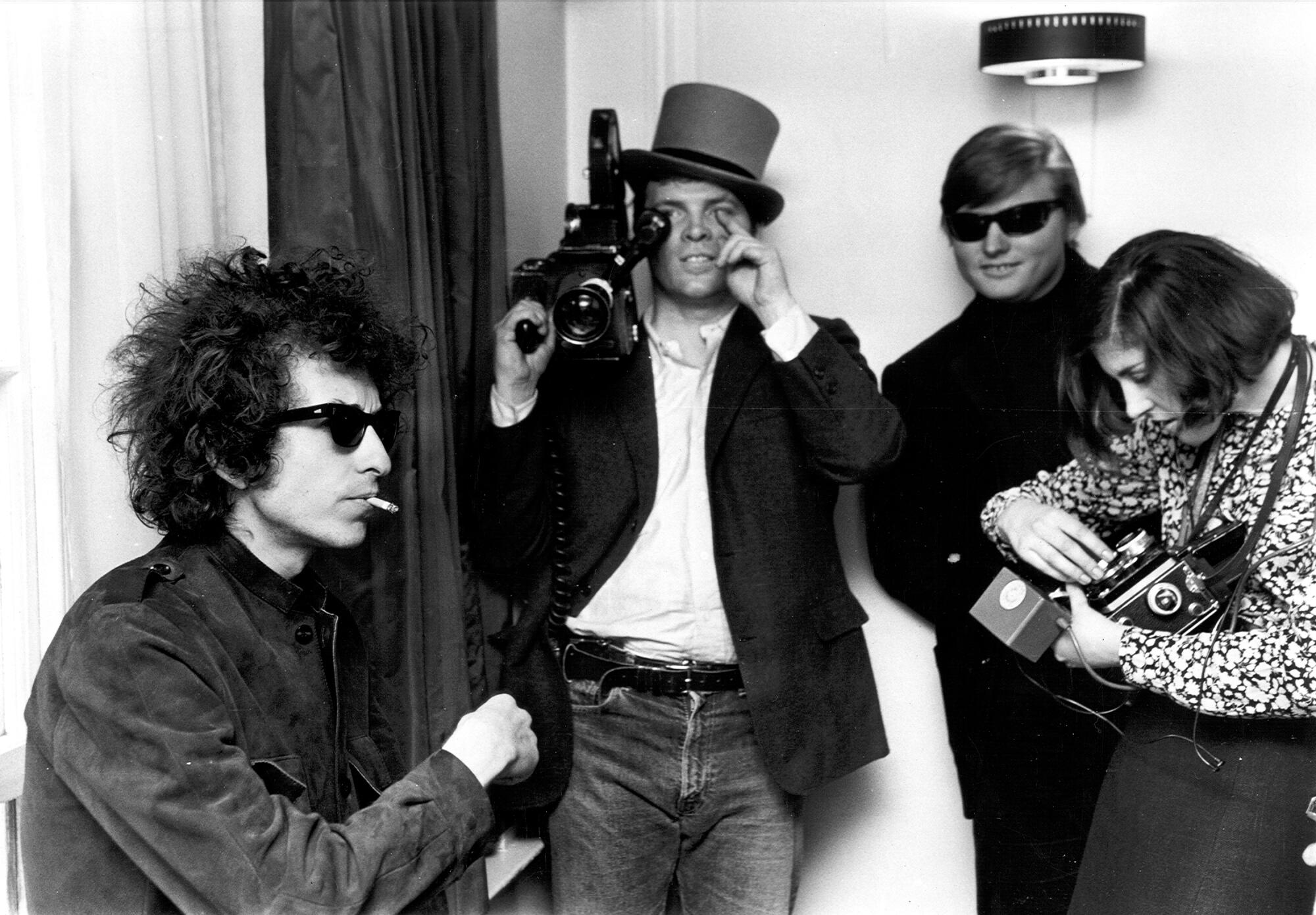
Bob Dylan, left, with “Dont Look Back” director D.A. Pennebaker, drummer Mickey Jones and photographer Fiona Adams.
(Michael Ochs Archives/Getty Images)
Bob Dylan — or Timothée Chalamet — is having a media moment with the biopic “A Complete Unknown” about to be unleashed. But for a grainy, black and white glimpse of the real thing in action, go to D.A. Pennebaker’s cinéma vérité record of Dylan’s 1965 tour of England, as he transitions from Great Folk Hope to Arty Enfant Terrible. The Dylan seen here can be charming or arrogant — sometimes both at once — childish or wise. The solo performances as Pennebaker films them are arresting and gorgeous, but he does as well capturing the public hubbub and private interludes. This is the source, as well, of the “Subterranean Homesick Blues” cue-card proto-video, tacked on as a sort of curtain-raiser, with a deadpan Dylan running through cue cards as friends Bob Neuwirth and Allen Ginsberg lurk in the background. (Stream on Max and Criterion Channel for free through Jan. 1.) — R.L.
‘Long Strange Trip’ (2017)
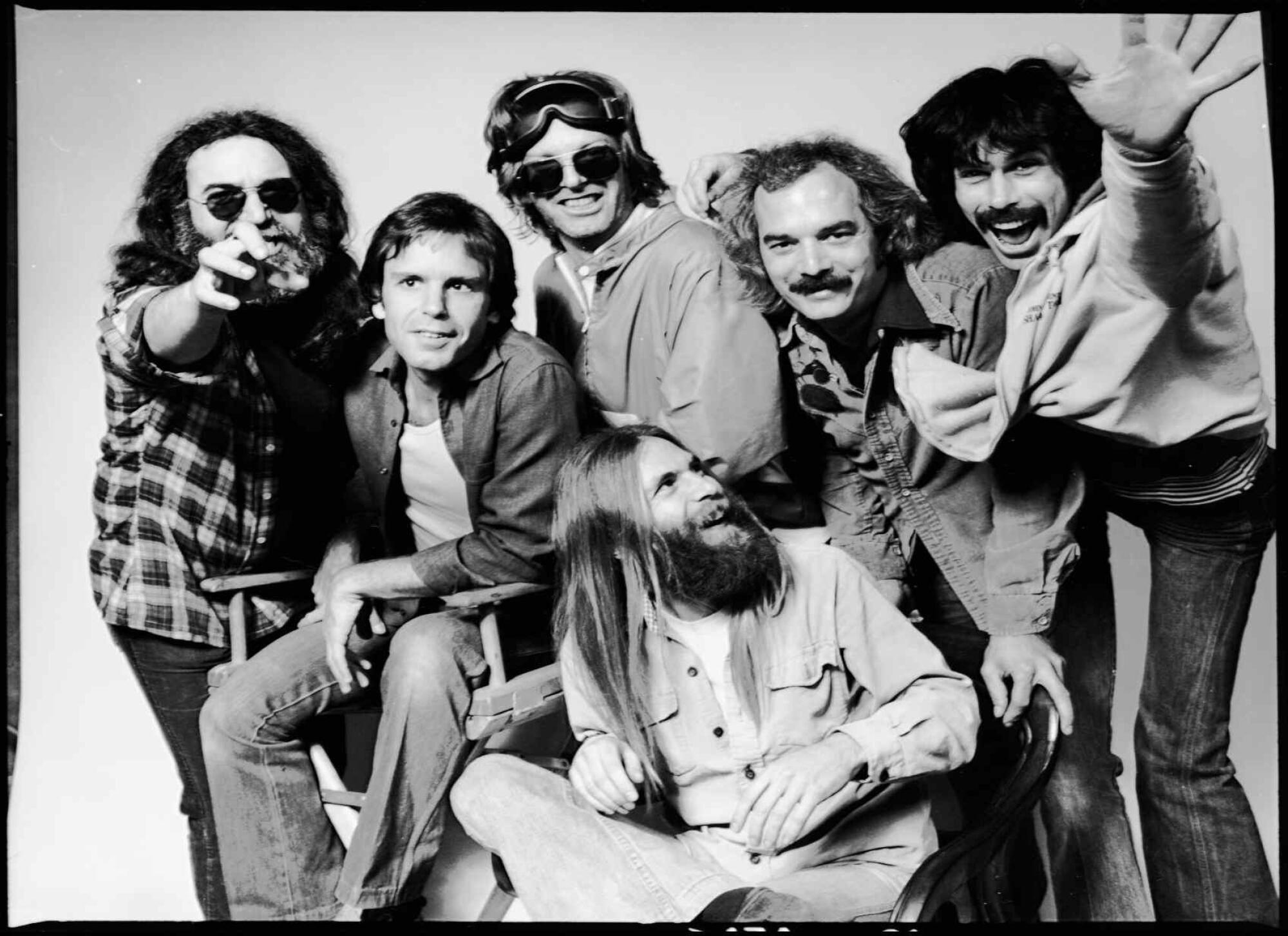
The Grateful Dead, from left: Jerry Garcia, Bob Weir, Phil Lesh, Brent Midland (seated), Bill Kreutzman and Mickey Hart.
(Associated Press)
Depending on how you feel about their music, and the culture that surrounds it, a six-part, four-hour docuseries on the Grateful Dead will seem not a minute too short or four hours too long. But for anyone not, um, dead set against them, Amir Bar-Lev‘s sweet, bittersweet, funny, tragic and inspiring film, affectionate but not blinkered, earns its length. A band proud to play without a road map (“Sure don’t know what I’m going for,” in the words of one Dead song, “but I’m going to go for it”), they accidentally gave birth to a community of fans that has continued without them. The musicians, especially but not exclusively Jerry Garcia, whose death in 1995 only technically ended the Dead, prove remarkably articulate about the why and wherefore of their music and the group mind that created it. “The moment is king,” says bass player Phil Lesh, who died earlier this year. “No one person can think this all up themselves.” (Stream on Prime Video.) — R.L.
‘The Velvet Underground’ (2021)
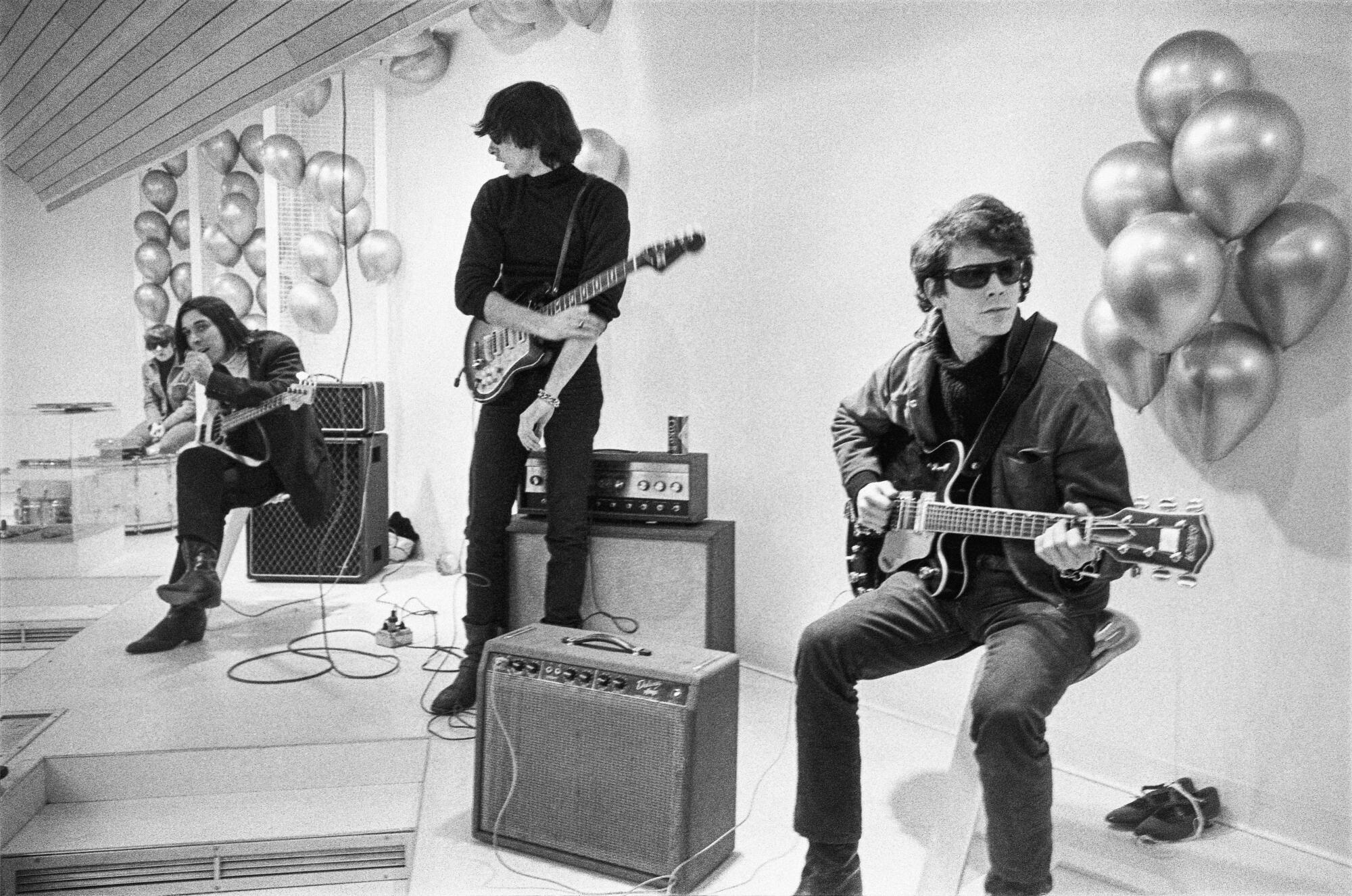
Moe Tucker, John Cale, Sterling Morrison and Lou Reed in an archival photo from “The Velvet Underground.”
(Apple)
Todd Haynes’ documentary about a band whose influence is still felt half a century after almost nobody bought their records, mostly resolves the problem of how to make a movie about a musical group who in its relatively short career left almost no film record. Haynes relies on photographs, clips from tangentially relevant ephemeral films and soundless remnants shot by mentor/facilitator Andy Warhol, a strategy that can be distracting and rewarding in turns. But all in all “The Velvet Underground” adroitly tells the story, elegantly evoking the anti-groovy vibe of the most New York of all New York City bands. Like many rock stories it’s a tale of complementary talents finding mutual inspiration before ego and ambition tear them apart, though not every band leaves such a striking legacy. (Stream on Apple TV+.) — R.L.
‘Zappa’ (2020)
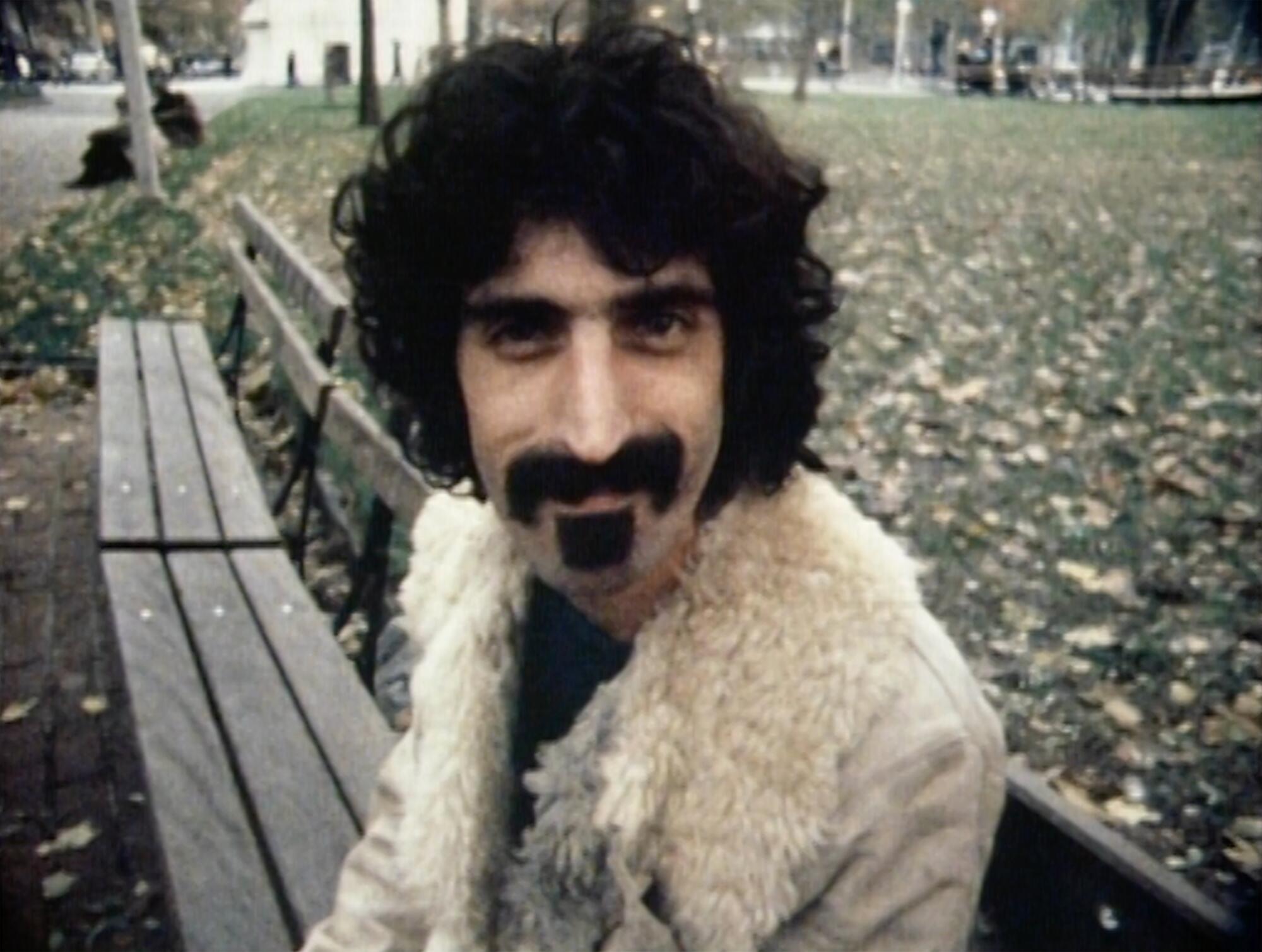
Frank Zappa from the 2020 documentary “Zappa.”
(Roelof Kiers/Magnolia Pictures)
If “The Velvet Underground” had to contend with limited source material, “Zappa” director Alex Winter enjoyed an open door to the vault of a man who recorded everything, filmed much and apparently kept it all. This busy romp through the life, art and times of Frank Zappa is illustrated with clips and photos even ardent fans won’t have seen; commentary from friends, family and collaborators fills out the picture of a very public private person. Winter is more concerned with the serious musician than the scatological comedian, concentrating on the early work with the Mothers of Invention and late-period rehearsals and concerts of the orchestral music Zappa wrote his whole life. “My desires are simple,” says the composer. “All I want to do is get a good performance and a good recording of everything I ever wrote, so I can hear it.” (Stream on Tubi, Prime Video and Hulu.) — R.L.
‘20 Feet From Stardom’ (2013)

Darlene Love is among the vocalists featured in “20 Feet From Stardom.”
(Tomas Ovalle / Associated Press)
Morgan Neville’s Oscar-winning film honors the backup singers, mostly women of color, who added soul to recordings and glamour to stage shows, both Black and white, from the 1960s on. Darlene Love, Claudia Lennear, Merry Clayton, Táta Vega and others reflect on discrimination, luck and the difficulty of moving from the background to the spotlight, share career highlights and amusing (and not so amusing) anecdotes. There’s a vein of sadness running through it, as talented women never achieve stardom and changes in taste and production have made even session work more scarce. But through it all there’s the singing, and a lot of it. “There’s something that happens when you lock in to somebody and all the harmonics ping,” says Sting backup singer Jo Lawry. “I mean, if you don’t like that, what do you like?” (Stream on the Roku Channel.) — R.L.
‘Always for Pleasure’ (1978)
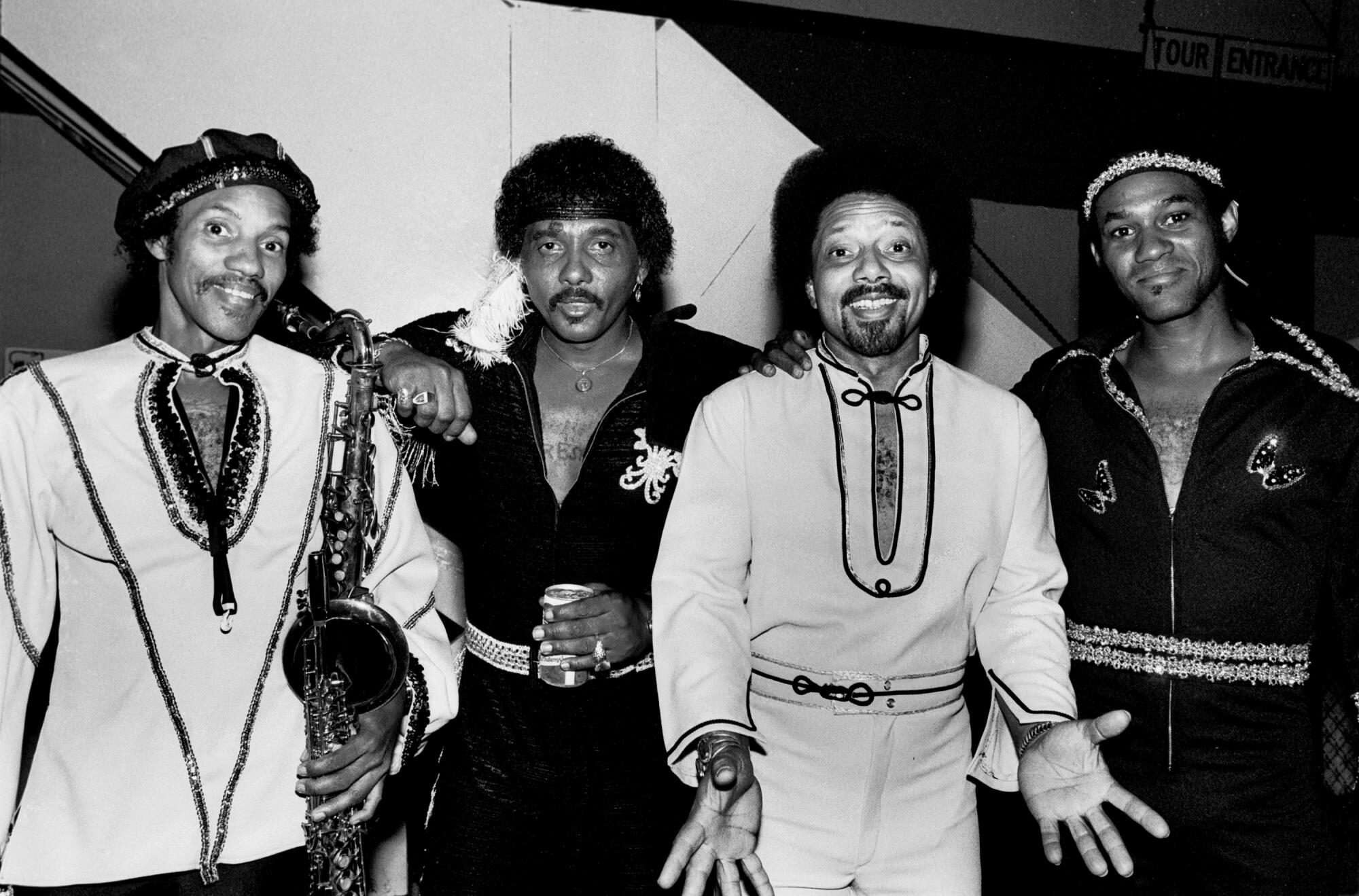
Charles Neville, from left, Aaron Neville, Art Neville and Cyril Neville of the Neville Brothers pose for a portrait at Chicagofest in July 30, 1981.
(Paul Natkin / Getty Images)
Many documentaries by the late, great Les Blank, most set at the intersection of music, culture and food, are available on the Criterion Channel, including “Chulas Fronteras” (Tex-Mex norteño), “The Blues According to Lightning Hopkins,” “Spend It All” (Cajun life), and “In Heaven There Is No Beer” (polka culture). All are worth your time, but I return most often to “Always for Pleasure,” Blank’s swan dive into the gumbo that is New Orleans — not the tourist’s version but the ordinary extraordinary life of a city that loves a parade. (Even for a funeral.) Musicians heard, or heard from, include Professor Longhair, Allen Toussaint, the Neville Brothers and the Wild Tchoupitoulas in their beaded, feathered finery, along with many anonymous brass and percussion players. Singer Irma Thomas tells you the way to cook beans. “Treme” fans, you need to see this. (Stream on Kanopy and Criterion Channel.) — R.L.
‘The Decline of Western Civilization’ (1981)

X performs at the Troubadour in Los Angeles earlier this year.
(Jason Armond / Los Angeles Times)
Penelope Spheeris’ cult favorite, filmed during not quite the first flush of Los Angeles punk — the scene was already changing, as the pogoers were elbowed out by the moshers. It’s a sort of black musical comedy about loud, fast bohemianism, performative rebellion and lost youth, arranged around performances by X, the Bags, Black Flag, Fear and others, with musicians visited “at home” (the Germs’ Darby Crash cooks bacon and eggs, X’s John Doe gives Top Jimmy a tattoo, Black Flag frontman Ron Reyes shows off the closet he lives in) and interviews with more and less self-aware fans. Says one of the source of his rage: “living in the city, and just seeing everything, seeing all the ugly old people… the buses, and just the dirt.” Locals of a certain age and taste may see old friends, or perhaps themselves. (Stream on Prime Video, Pluto, Kanopy and YouTube.) — R.L.
‘Patti Smith: Dream of Life’ (2008)
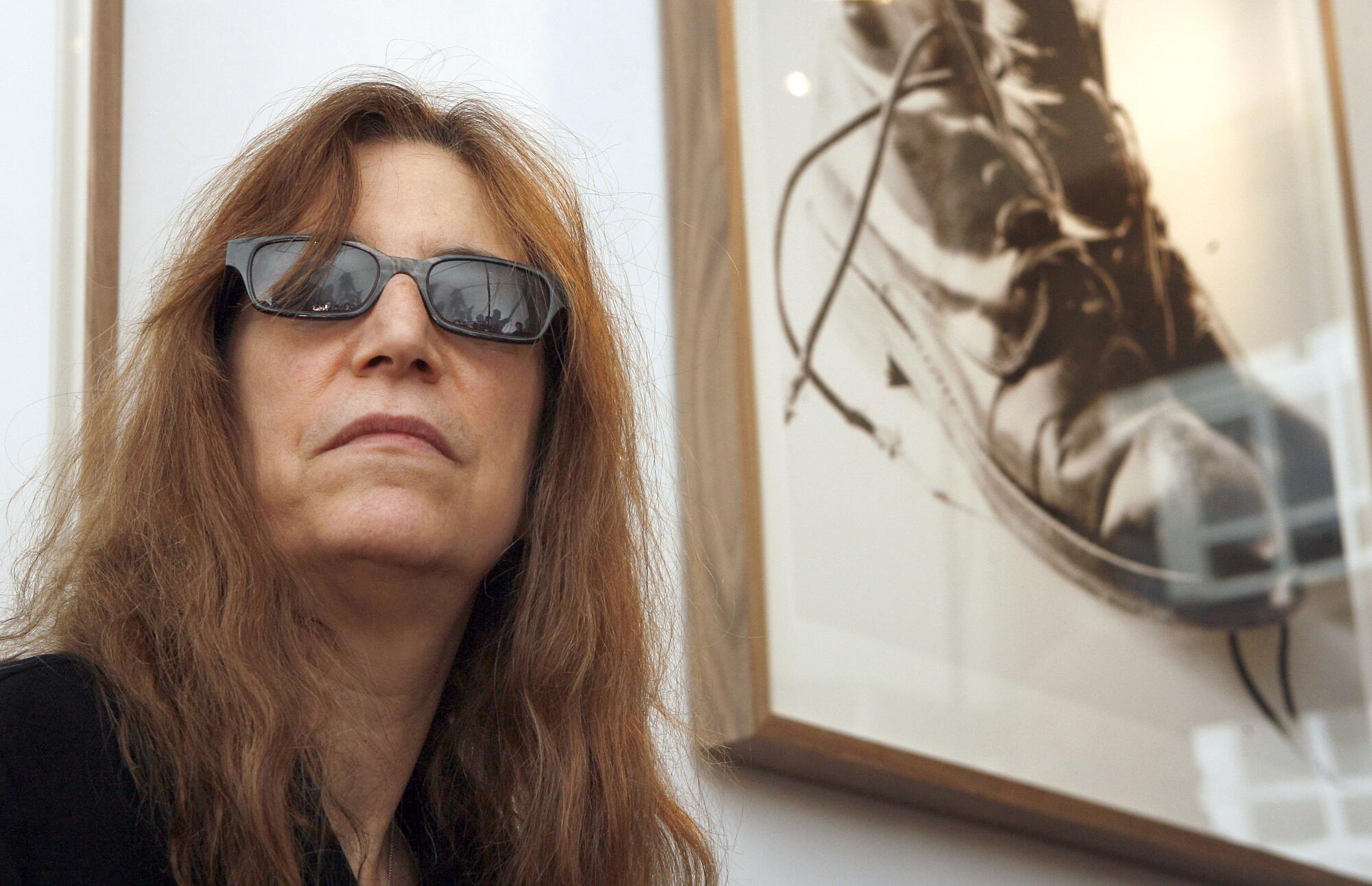
Patti Smith pictured in Berlin in 2008.
(Michael Sohn / Associated Press)
“Life isn’t some vertical or horizontal line,” says Patti Smith in this nonlinear scrapbook documentary. “You have your own interior world, and it’s not that neat.” From the mid-1990s to the mid-2000s, professional photographer Steven Sebring followed the poet-singer-punk progenitor across time and space, then rearranged the pieces into an impressionistic collage. Set onstage, backstage, at home and abroad, it creates the non-paradoxical double image of Smith as a person dedicated in an almost religious way to art and as an ordinary mother, daughter, friend — priestly and intense in performance, goofy and sweet in life. All rock docs should include the subject visiting their parents. Smith: “Nobody makes coffee like my dad.” Dad: “Don’t build me up too much.” (Stream on Tubi, Pluto and YouTube.) — R.L.
‘Summer of Soul (or, When the Revolution Could Not Be Televised)’ (2021)
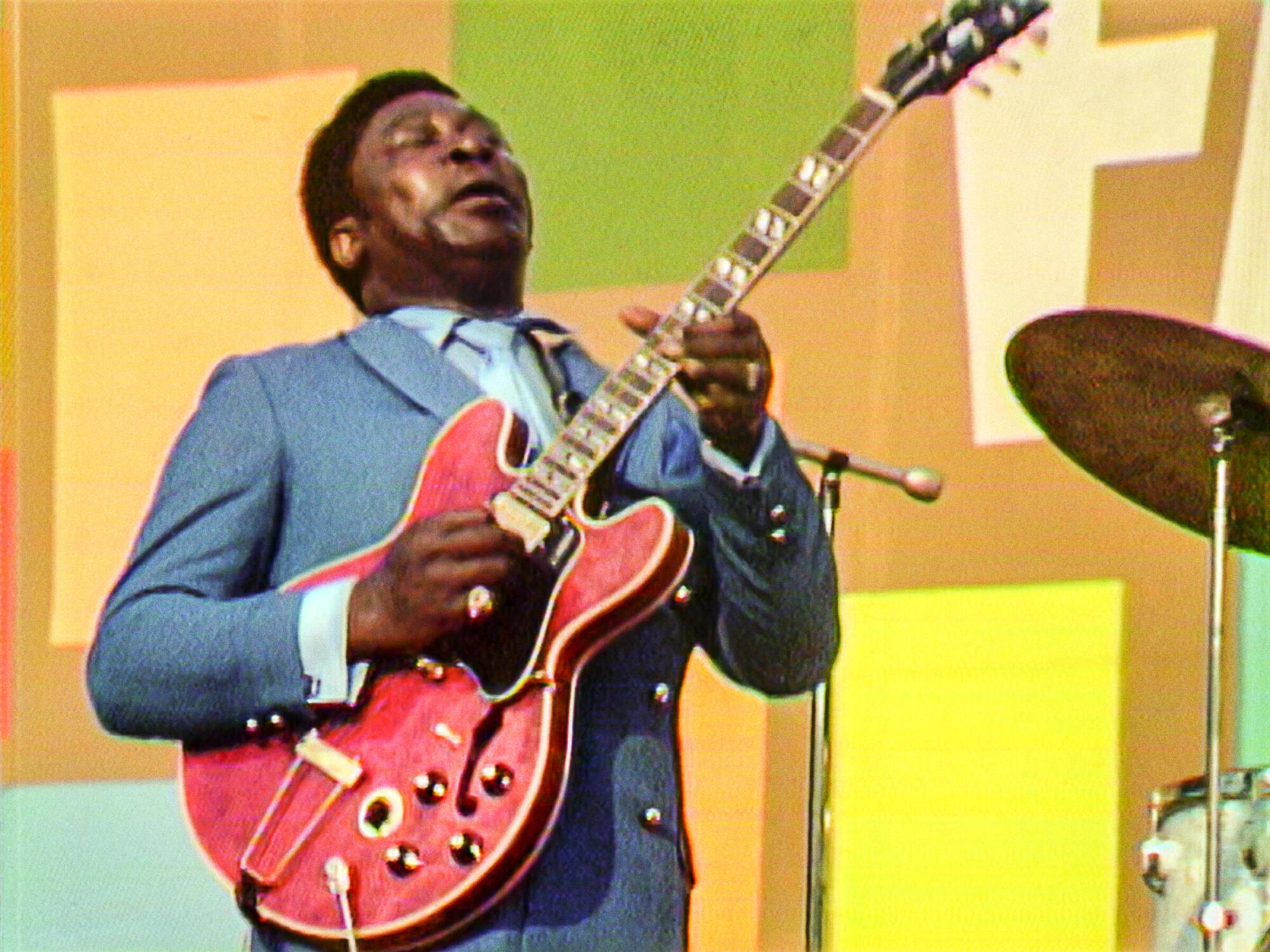
B.B. King in “Summer of Soul.”
(Searchlight Pictures)
Great documentaries can make you look at something familiar in a new light, but they can also reclaim history that has long been forgotten — or was intentionally erased. That’s what happened when Ahmir “Questlove” Thompson made this joyous, Oscar-winning film about the Harlem Cultural Festival, a series of concerts held over the turbulent summer of 1969 at Mount Morris Park (now Marcus Garvey Park) in Harlem. Unlike Woodstock, which took place a few hours up the road that same summer and has been endlessly memorialized since, the Harlem Cultural Festival faded into obscurity. Culled from roughly 40 hours of footage that lay untouched in a basement for decades, “Summer of Soul” features mesmerizing performances by the likes of Stevie Wonder, Nina Simone and B.B. King. News clips and contemporary interviews provide just enough exposition to understand the cultural context, but never get in the way of the magic. (Stream on Hulu.) — Meredith Blake
‘Tina’ (2021)
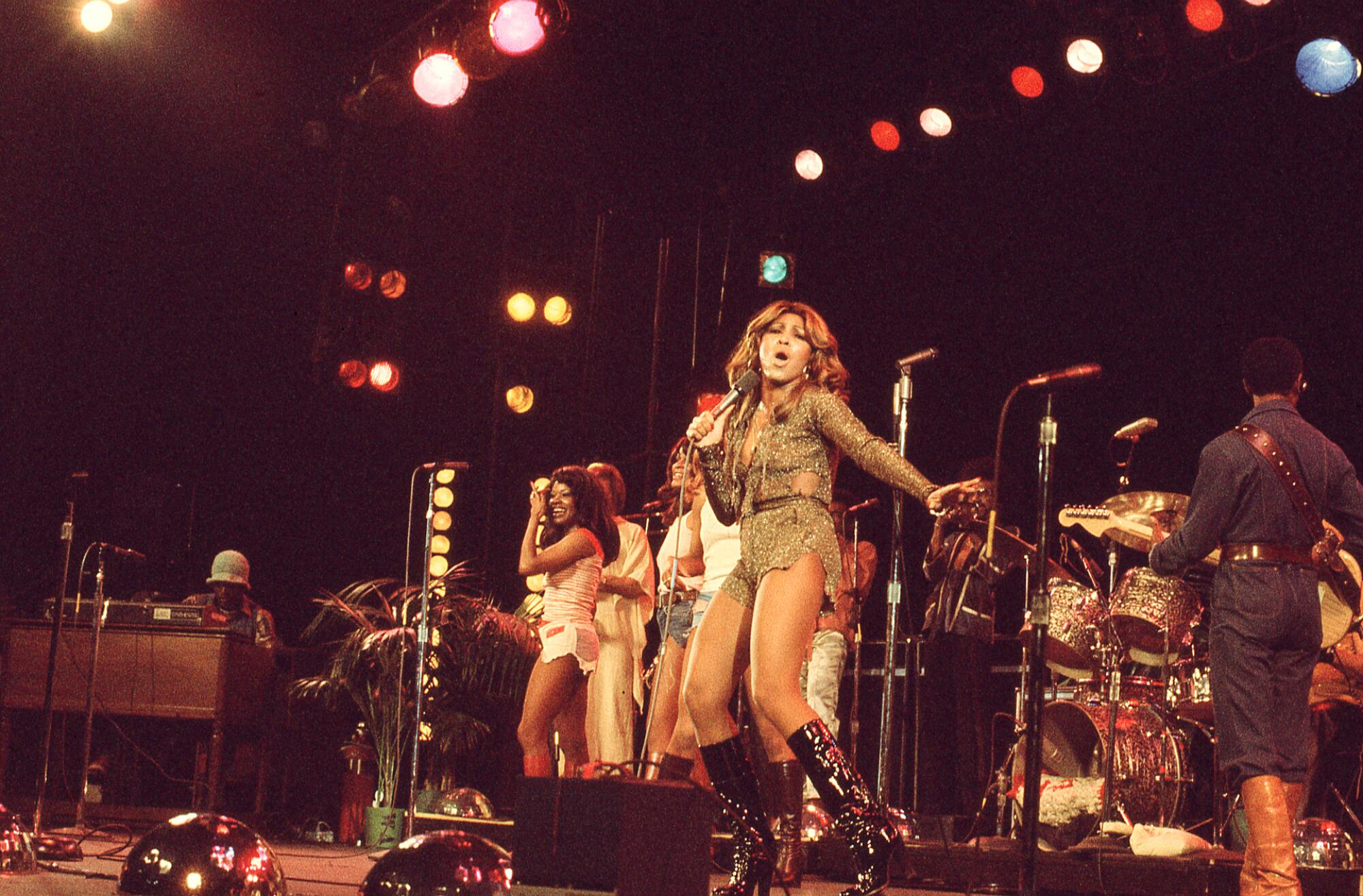
Tina and Ikettes performing in January 1976, as seen in “Tina” on HBO.
(Rhonda Graam/HBO)
By the time this documentary came out in 2021, Tina Turner’s life story — or at least her escape from an abusive marriage to Ike Turner and the triumphant solo career that followed — was already the stuff of rock legend, familiar to many thanks to the bestselling autobiography “I, Tina” and the Oscar-nominated biopic “What’s Love Got to Do With It.” But “Tina” sheds powerful light on the singer, who was born Annie Mae Bullock before adopting a stage name selected by Ike, with whom she began performing as an insecure teenager. Filmmakers T.J. Martin and Dan Lindsay don’t shy away from the violence Turner experienced during her marriage, but “Tina,” rich with archival clips of Turner’s raw, kinetic live performances, is also a celebration of her singular charisma. Most movingly, it features an extensive interview with Turner herself and marked the superstar’s final appearance before her death in 2023. (Stream on Max.) — M.B.
‘Yacht Rock: A Dockumentary’ (2024)
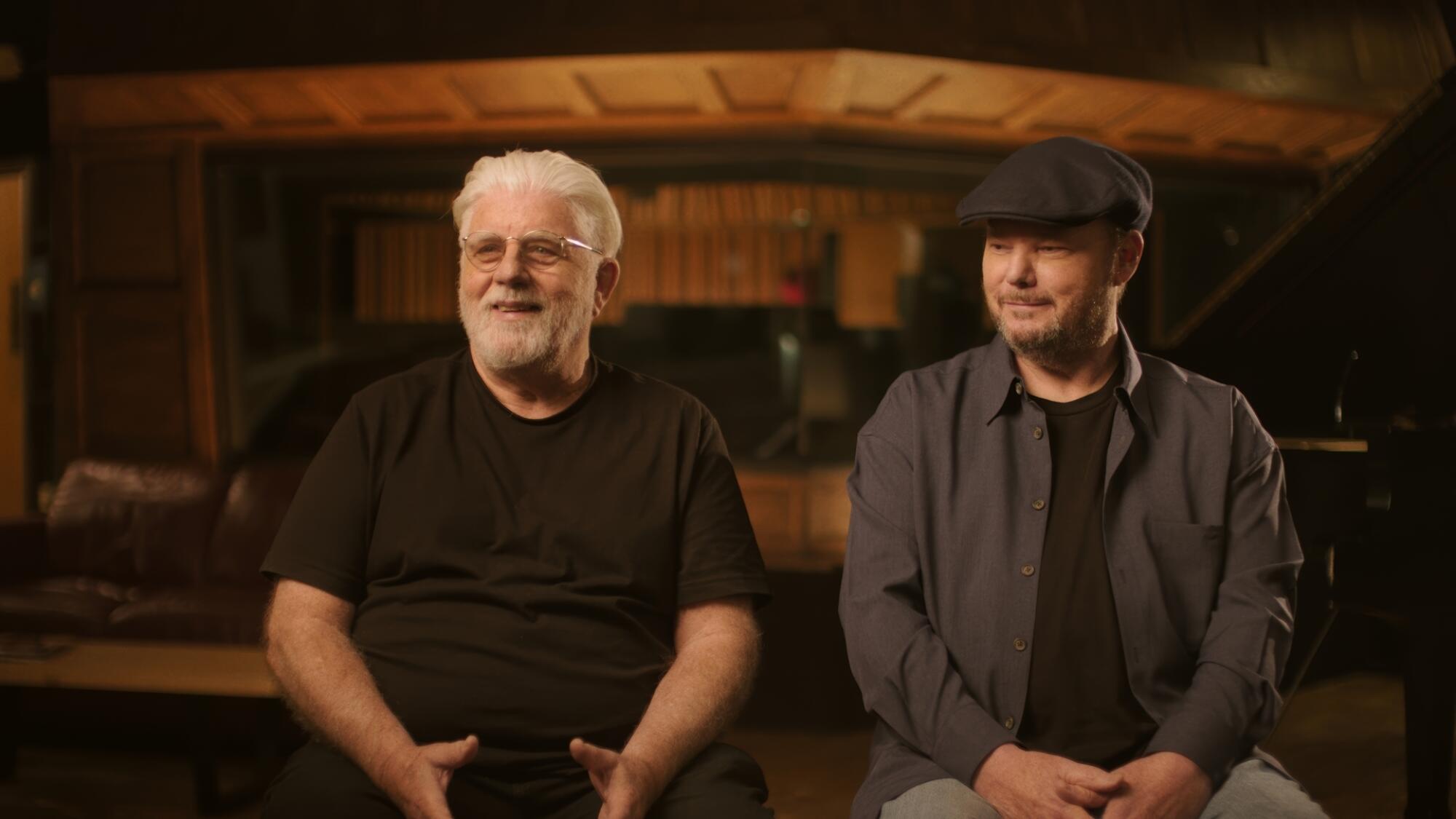
Michael McDonald and Christopher Cross in “Yacht Rock.”
(HBO)
This delightfully nerdy documentary explores what may be the only musical genre defined retroactively by a bunch of guys making videos at home. But that’s exactly what happened, back in the aughts, when a handful of music enthusiasts in Los Angeles made “Yacht Rock,” a series of videos spoofing the mellow-rock stars of the ‘70s and early ‘80s. The series took off, spurring renewed appreciation for the slickly produced sounds of artists like Steely Dan, Michael McDonald and Toto, whose paths crossed in the L.A. music scene in the pre-MTV era. Directed by Garret Price, “Yacht Rock” is breezy and fun, but also has an almost academic rigor. You will walk away with a clear definition of what — and isn’t — yacht rock, and a deep familiarity with the canonical works of the genre. (Prepare to have “What a Fool Believes” in your head for days after viewing.) Many of the key players, including McDonald, Kenny Loggins, Christopher Cross, and the members of Toto appear in interviews, and generally seem to have a good sense of humor about the whole “yacht rock” thing. (One notable exception: Steely Dan’s Donald Fagen, who appears in a single, exceedingly cranky phone call.) (Stream on Max.) — M.B.
‘The Bee Gees: How Can You Mend a Broken Heart’ (2020)
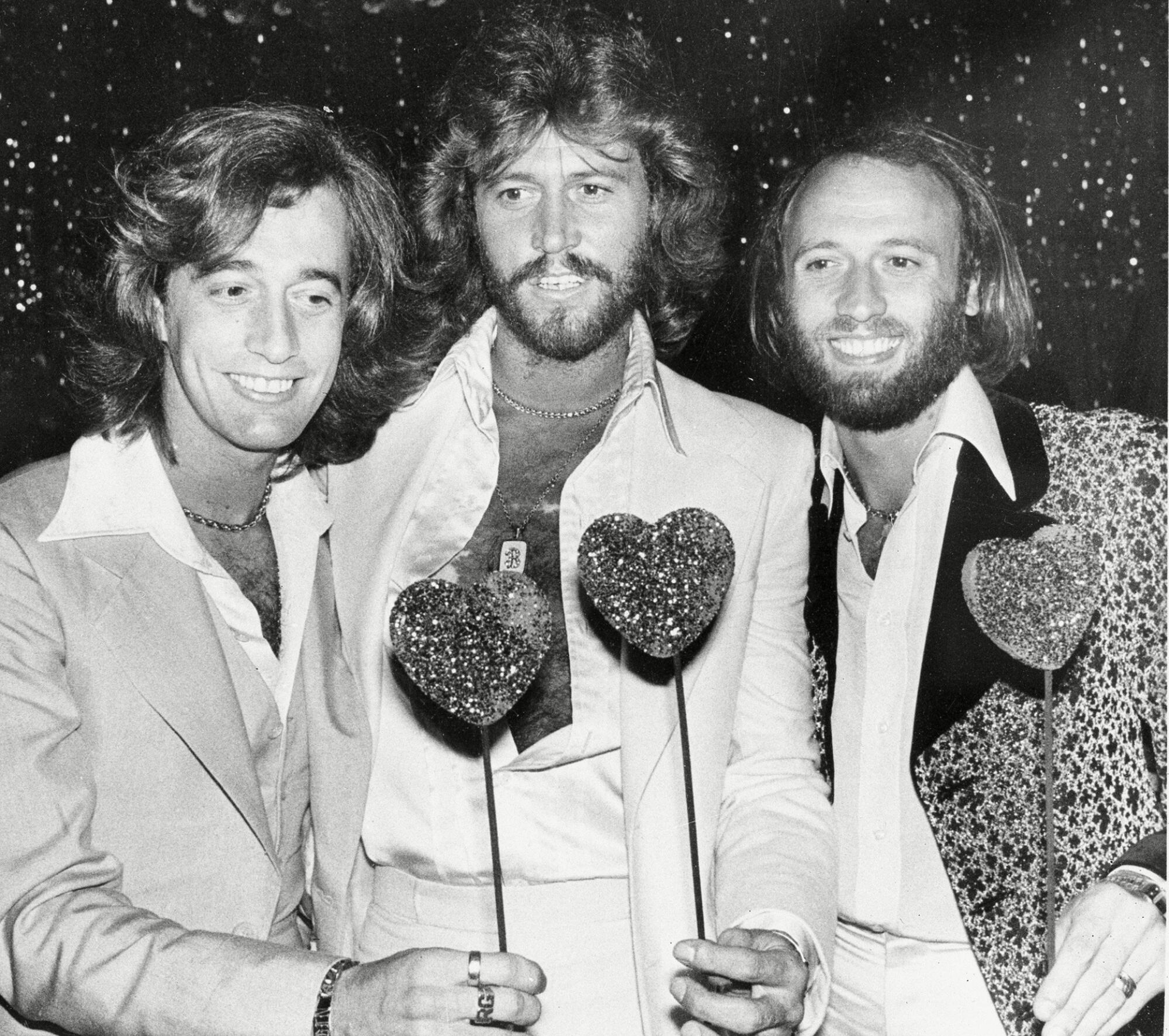
The Bee Gees — Robin, from left, Barry and Maurice Gibb — pictured in Los Angeles.
(Lennox Mclendon / AP / Shutterstock)
The colossal success of the “Saturday Night Fever” soundtrack meant that the Bee Gees became synonymous with disco, but as this documentary makes clear, there was much more to the Brothers Gibb, who were too versatile and talented to be confined to a single genre. (All that anti-disco fervor was pretty misguided, anyway.) Director Frank Marshall tells the story of how Barry, Maurice and Robin Gibb relocated from Australia to England in the 1960s and began churning out hit records. As their popularity rose and fell over the years, the group evolved to stay with the times: Barry improvised a high-pitched falsetto that became the Bee Gees’ signature, and they got on the disco bandwagon. The film includes fascinating stories about the origins of some of their hits, like the sound of a car crossing a bridge that inspired the rhythmic hook of “Jive Talkin’.” “How Can You Mend a Broken Heart” is a celebration of a group that was wrongly maligned, but it’s also a bittersweet tribute to brotherhood. (Stream on Max.) — M.B.
‘The Greatest Night in Pop’ (2024)
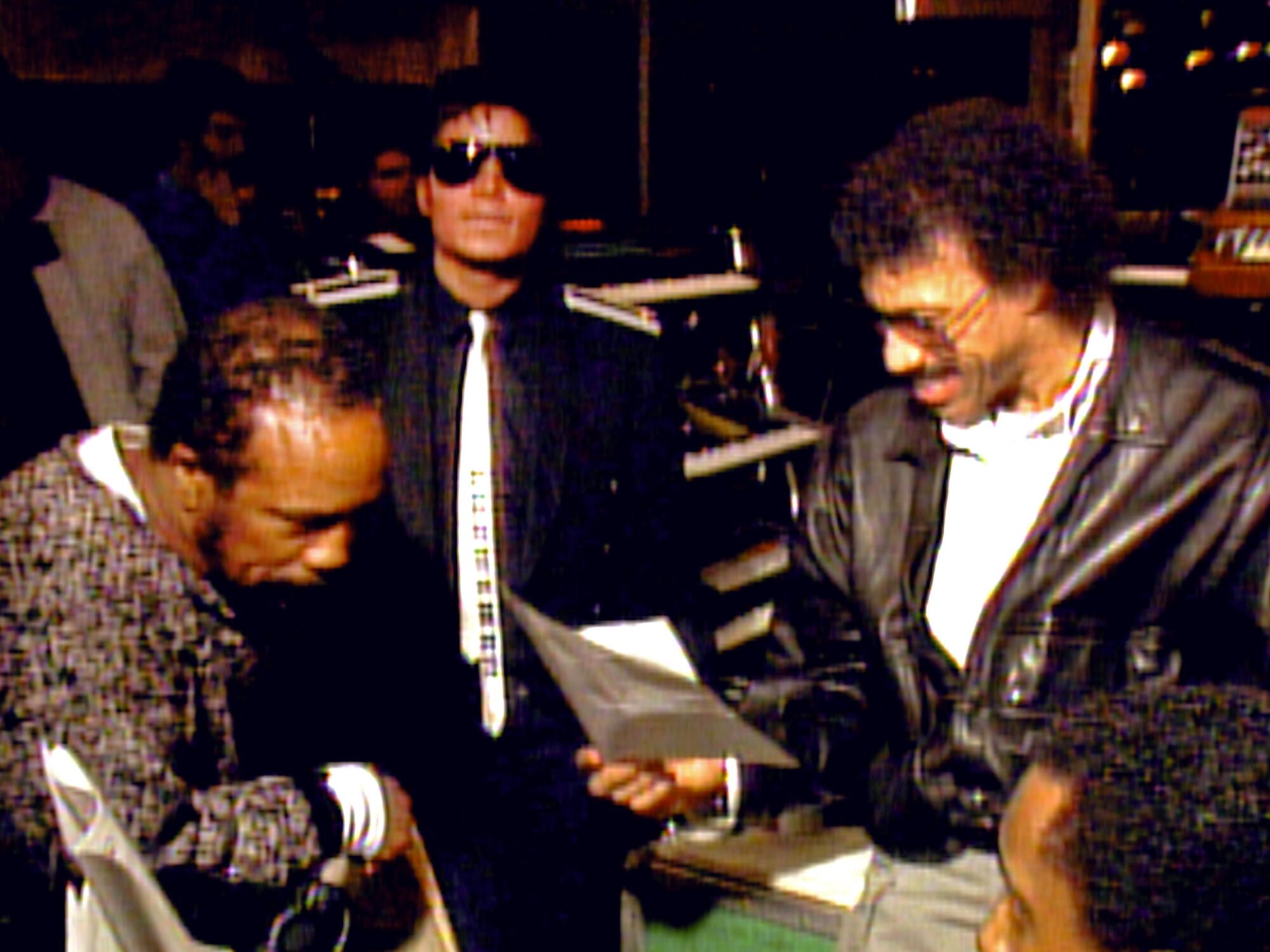
Quincy Jones, from left, Michael Jackson and Lionel Richie in “The Greatest Night in Pop.”
(Netflix)
If you grew up in the 1980s, you probably heard “We Are the World” hundreds of times on the radio and knew the charity single, released in 1985, was created to raise funds for famine relief in Ethiopia. But chances are you gave much less thought to the massive logistical effort that went into corralling dozens of music legends, with their colossal egos and equally voluminous hair, into a Los Angeles studio to record the song. Directed by Bao Nguyen, “The Greatest Night in Pop” tells the supremely entertaining story of how Lionel Richie and Michael Jackson wrote the song and managed to assemble an all-star squad, including Bob Dylan, Stevie Wonder, Ray Charles, Diana Ross and Tina Turner, to cut the track on one long, sleepless night after the American Music Awards. The documentary is surprisingly suspenseful — you’ll find yourself waiting with baited breath to see if Prince shows up or find out which artists will get solo verses, even if you already know the answer — and smartly attuned to celebrity excesses of the era. A moving and funny slice of ‘80s nostalgia, “The Greatest Night in Pop” will make you appreciate the genius of producer Quincy Jones, appreciate the stamina of Richie, who also hosted the AMAs that night, and long for the days when pop music felt, somehow, bigger than it does now. (Stream on Netflix.) — M.B.
‘Milli Vanilli’ (2023)
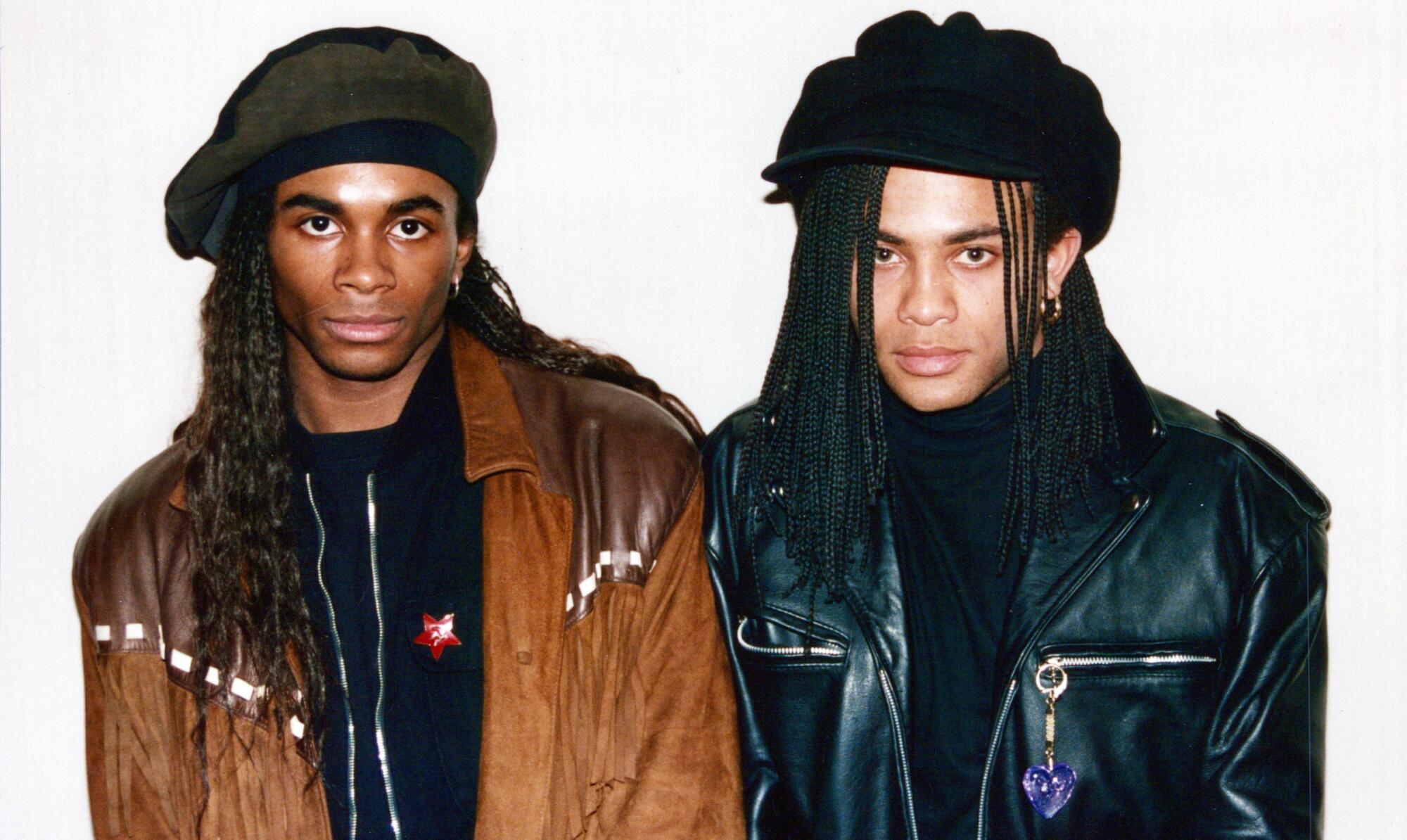
The pop duo Milli Vanilli was Fabrice Morvan, left, and Rob Pilatus.
(Ingrid Segeith/Paramount+)
Before they became an international punchline, Milli Vanilli was one of the biggest pop acts of the late 1980s and early 1990s. With their striking looks and distinctive style, the duo of Fabrice Morvan and Rob Pilatus were tailor-made for the MTV era. But as the world eventually learned, they didn’t sing a single note on their multiplatinum debut album, “Girl You Know It’s True.” In a scheme devised by German producer Frank Farian, they lip-synced to music recorded by other, less telegenic artists. For many years, the Milli Vanilli scandal has been viewed as a semi-farcical cautionary tale about seeking fame at any price. But “Milli Vanilli” reframes the ordeal as a tragic story about the exploitation of artists — particularly Black artists — in the music industry. (Stream on Paramount+.) — M.B.
‘Nothing Compares’ (2022)
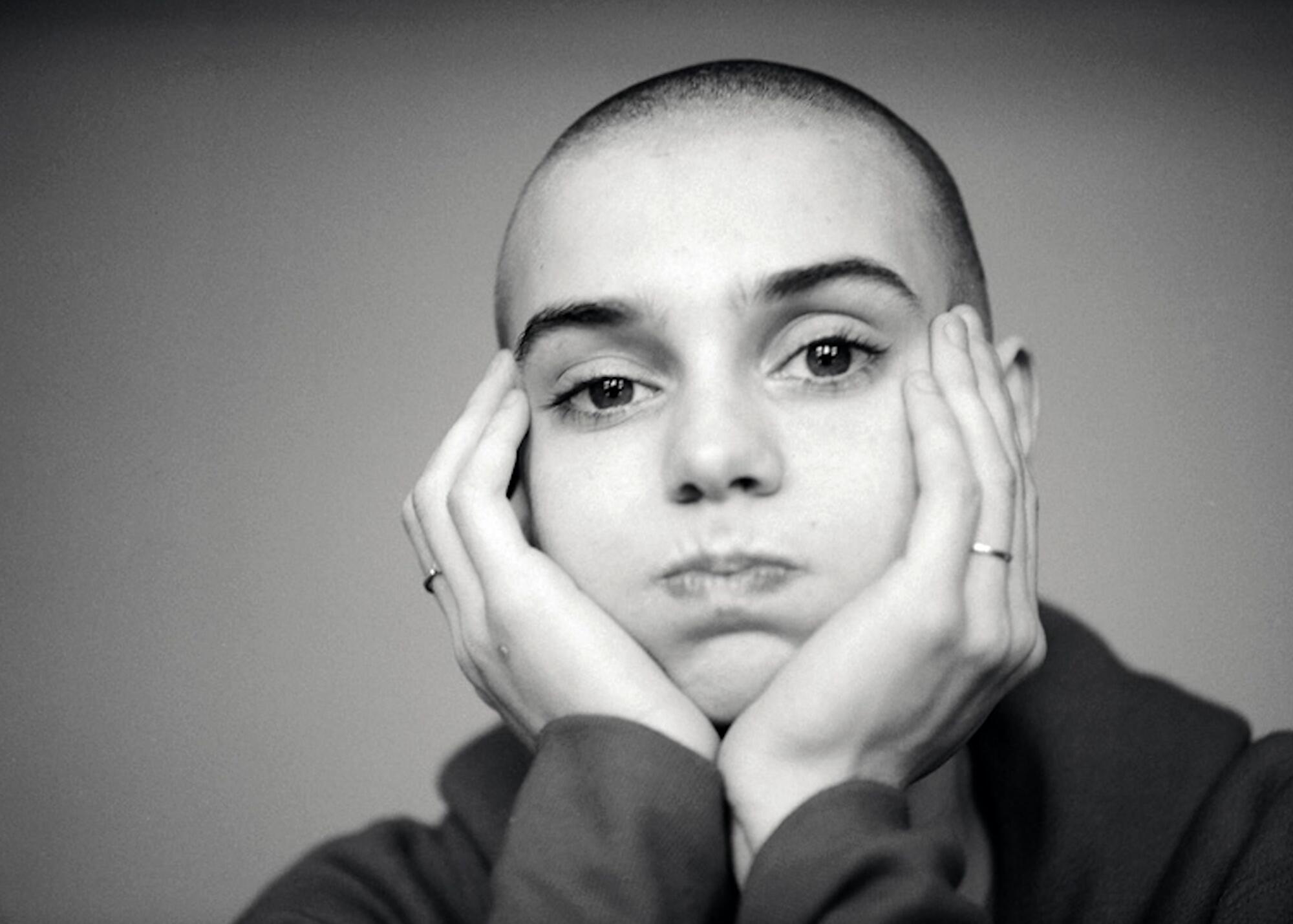
Sinead O’Connor photographed in 1988, as seen in “Nothing Compares,” directed by Kathryn Ferguson.
(Andrew Catlin / SHOWTIME)
On Oct 3, 1992, Sinéad O’Connor tore up a picture of Pope John Paul II on “Saturday Night Live,” effectively destroying her mainstream pop career with a single act of protest against the Catholic Church. Her death three decades later in 2023 triggered a flurry of posthumous appreciations that argued she was right all along. Directed by Kathryn Ferguson and released the year before her untimely passing, “Nothing Compares” offers a sympathetic reappraisal of O’Connor as a celebrity who was brutally canceled for speaking the truth and was one of many high-profile women vilified as “crazy” in the 1990s and 2000s. The centerpiece of the film is an extensive interview with O’Connor, who reflects on her traumatic childhood, her unlikely ascent to global stardom and the vicious backlash she faced. The film celebrates the raw, emotive power of her music, her willingness to call out injustice wherever she saw it and a one-of-a-kind image that rejected everything expected of a young, female star in an era of slick pop. (Stream on Paramount+.) — M.B.
‘Kurt Cobain: Montage of Heck’ (2015)
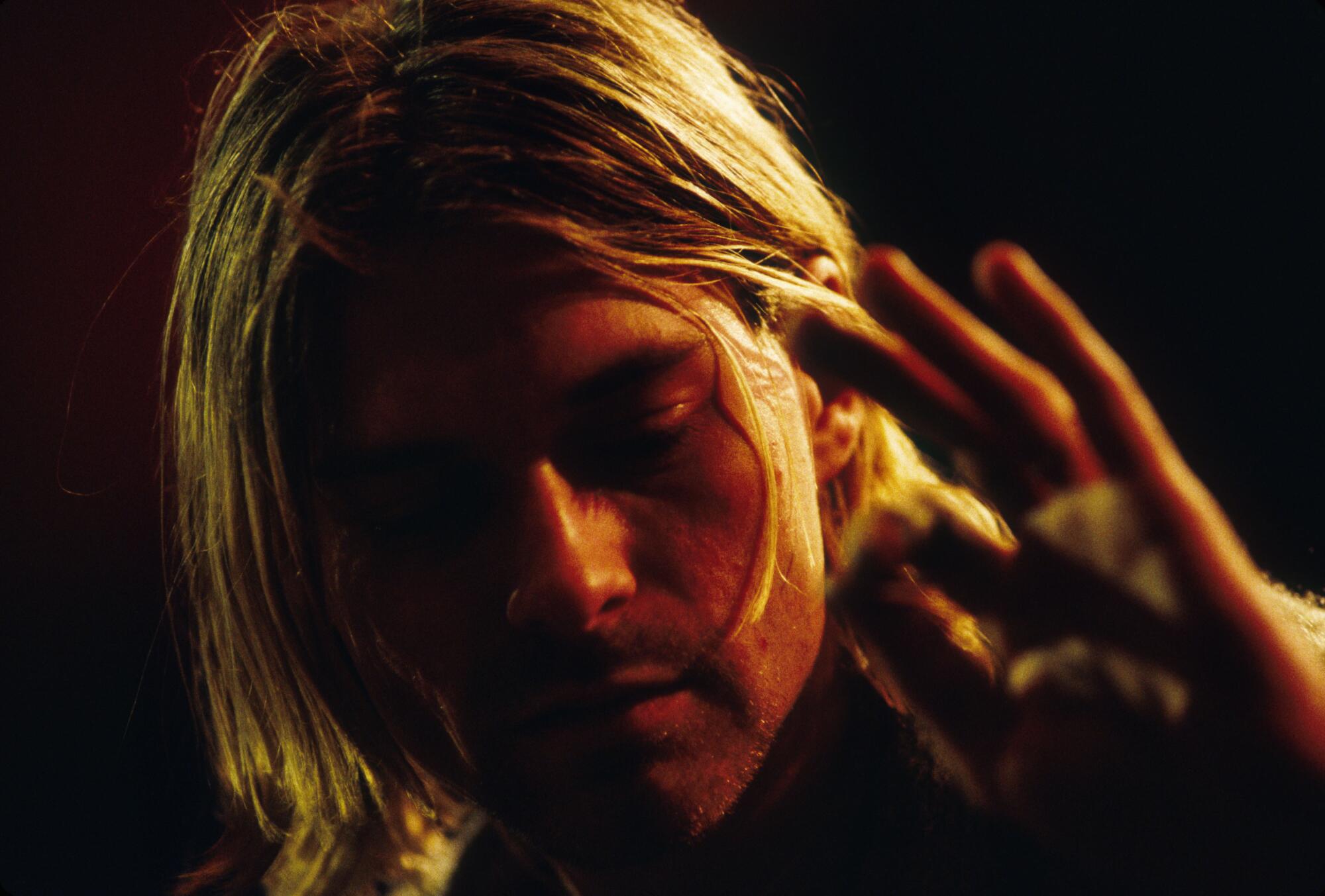
Kurt Cobain of Nirvana during the taping of “MTV Unplugged” at Sony Studios in New York in 1993.
(Frank Micelotta Archive/Getty Images)
Director Brett Morgen spent years sifting through Kurt Cobain’s personal archives to make this film, which presents a layered, startlingly intimate portrait of the late Nirvana frontman. Using art work, journal entries, audio recordings and Super 8 footage of a towheaded Cobain playing a toy guitar, “Montage of Heck” shows how the singer channeled childhood anguish — especially the upheaval caused by his parents’ divorce — into his music and eventually become an ill-at-ease Gen X icon. It resists many rock doc cliches, opting for interviews with Cobain’s immediate family, bandmate Krist Novoselic and wife Courtney Love, rather than using a parade of talking heads to explain Nirvana’s impact. The result is not hagiography, but a revealing glimpse inside the too-brief life of an artist as tormented as he was talented. (Stream on Max.) — M.B.
‘Dear Mama: The Saga of Afeni and Tupac Shakur’ (2023)
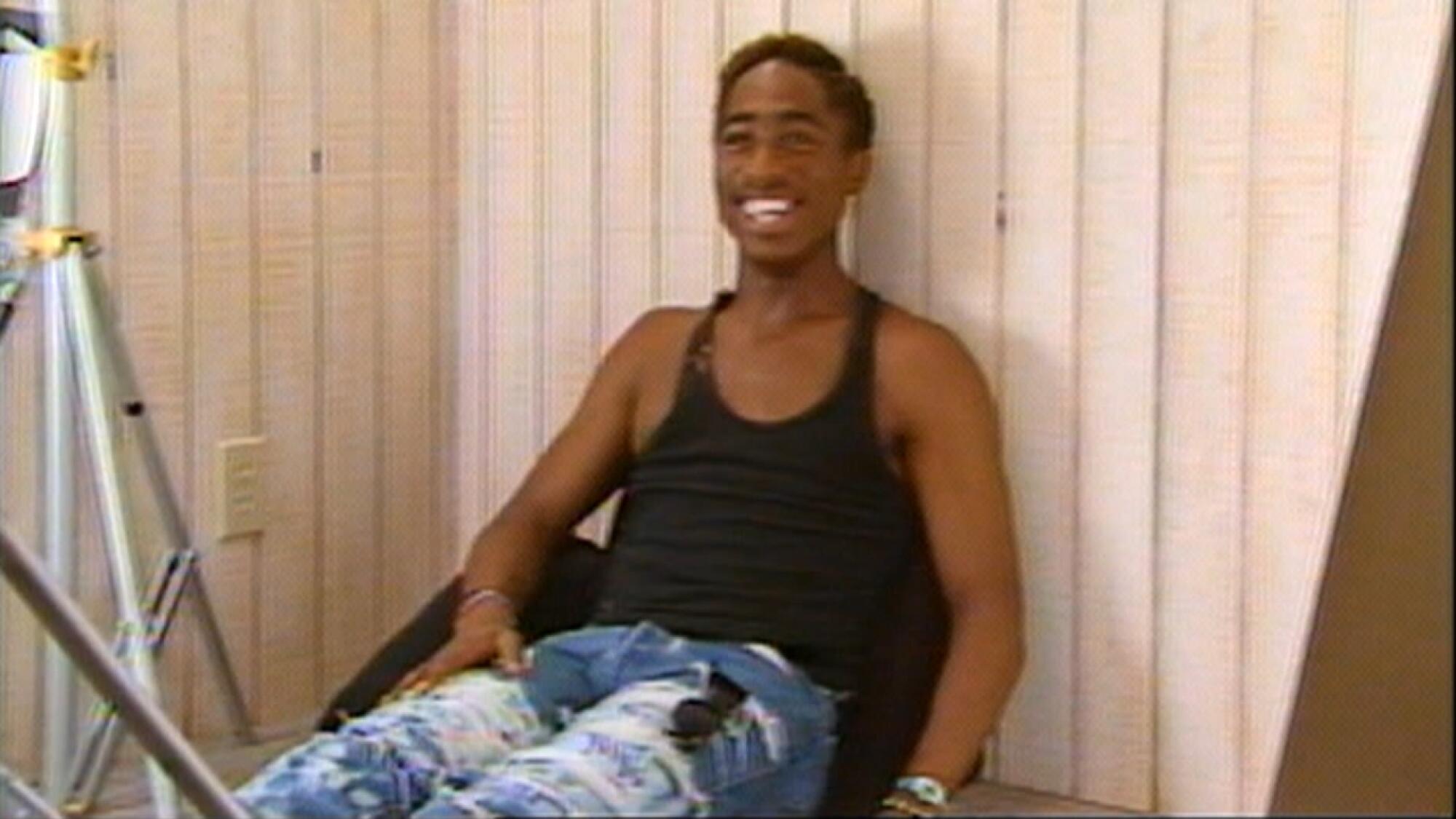
Tupac Shakur in “Dear Mama.”
(FX)
This five-part docuseries stands out in a crowded sea of musical biographies because of the thoughtful way it connects Afeni Shakur’s radical political activism to her son’s musical legacy. Directed by Allen Hughes, who also helmed the Emmy-winning series “The Defiant Ones,” “Dear Mama” unfolds chronologically, presenting richly detailed portraits of mother and son. We learn how Afeni, bright and ambitious, joined the Black Panther Party in New York, successfully defended herself in court with no formal training and later struggled with drug addiction. And we meet Tupac, who was murdered in 1996 at 25, as a bright, sensitive teenager with a gift for words who would go on to become synonymous with West Coast gangsta rap. The series draws fascinating parallels between Tupac and Afeni, whose relationship was sometimes strained despite their similarities. (Stream on Hulu.) — M.B.
‘Whitney’ (2018)

Whitney Houston performing at Arista Records’ 25th anniversary gala concert at the Shrine Auditorium in Los Angeles.
(Los Angeles Times)
Directed by Kevin McDonald, who also made the excellent “Marley,” this heartbreaking documentary sheds light on the personal demons that tormented Whitney Houston for years before her untimely death by accidental drowning at 48. With a transcendent voice and statuesque beauty, Houston may have been destined to become one of the biggest pop stars of the MTV era, but as “Whitney” argues, the sacrifice and denial that enabled her stratospheric success may have also paved the way for her tragic end. Unlike other documentaries about the late pop icon, it was made with the participation of the Houston family, including her mother, singer Cissy Houston, two brothers and ex-husband, Bobby Brown. As a result, McDonald had access to Houston’s music, including her gospel-infused rendition of “The Star-Spangled Banner,” which is dissected at length, as well as a trove of revealing home movies and photographs. But the Houstons’ cooperation does not shield them from scrutiny; one observer notes how Houston was treated like an ATM machine by her loved ones. “Whitney” candidly addresses long-standing questions about Houston’s sexuality and her relationship with Robyn Crawford, and deftly explores the minefield she had to navigate as a Black woman trying to please Black and white audiences alike. (Stream on Netflix.) — M.B.
